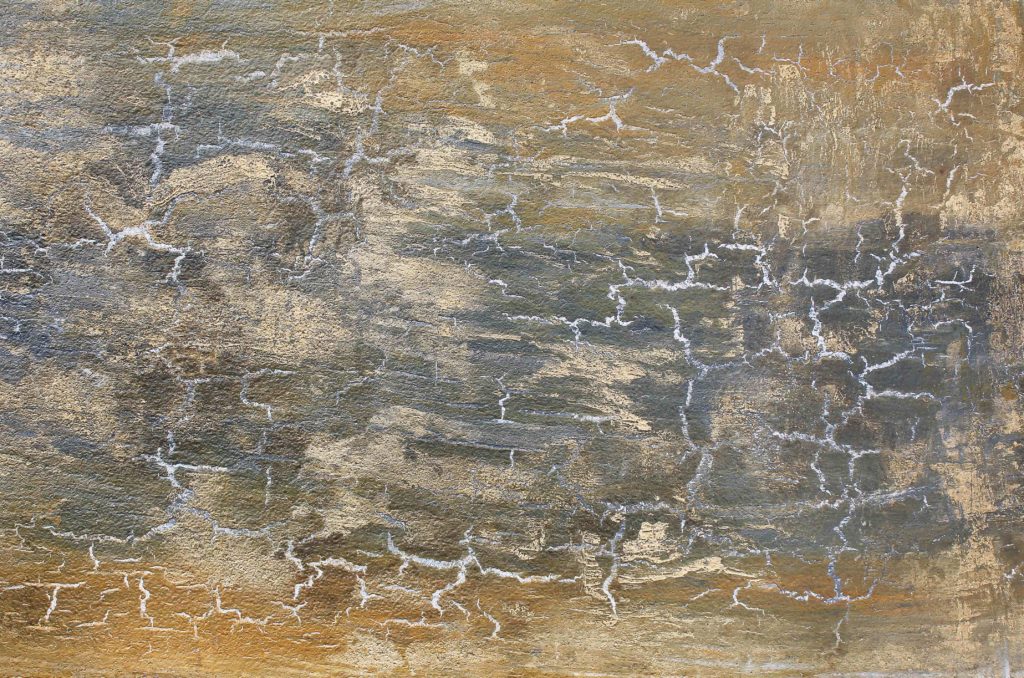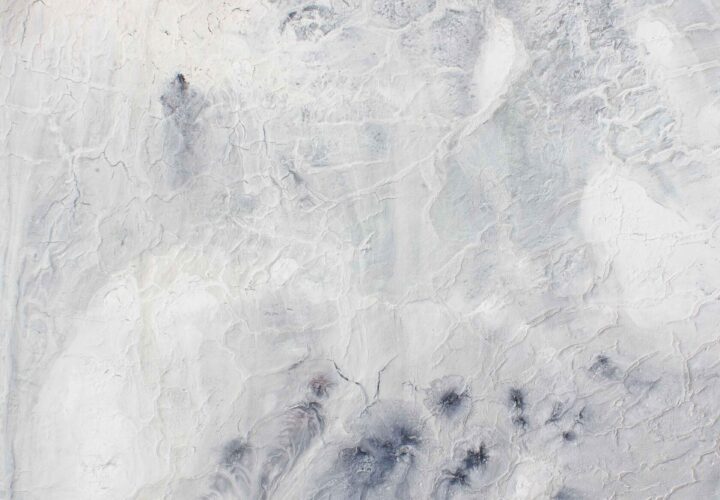
Los Angeles-based artist Chantal Barlow is drawn to the ocean and large bodies of water, which reappears as a prominent theme throughout her work. Here, she discusses how her racial identity has influenced her work, why all of her art explores relationships, and how her Portuguese heritage comes through in her paintings.
“I started painting as a child by borrowing things from my parents’ kitchen. I would use Saran wrap and tin foil—anything to create texture. As I got older and had more access to materials, I questioned what it was that I was really trying to say through my art. As I matured, I realized that, as a woman of color, I have multiple identities. Depending on the context, I’m confronted with them because I fit a lot of ‘checked boxes.’ I began exploring these identities in my work. But not necessarily directly—I didn’t have the words to articulate what I was doing until later in the process, when I began to make more thoughtful and conscious decisions about the kind of art I was making.
I use whatever medium gets the message across. I paint but I also do sculpture and photography. All of my work deals with relationships in some form or another. In my paintings, I create chemical reactions on the surface of the canvas. For me, this is bound up in the relationship of oil and water—they don’t mix. Sometimes they can create something really beautiful, sometimes they don’t. In the layering process, I realized that I could make conscientious decisions in my artmaking and relationships, which I view as interconnected. I continue to layer, and then I create a chemical reaction that allows for cracking to happen on the surface of the canvas. It reveals an under layer, which can be interpreted as positive or negative in terms of a relationship—maybe you’re reaching a new threshold in that relationship, or maybe it’s revealed to you that it’s not the right thing. The exploration becomes more and more refined over time.
I’m very attached to my Portuguese heritage. Being by the water is something I draw a lot of inspiration from. It encompasses a strong idea of fear and love and exploration and vastness and the unknown. When I was thinking about what materials to use for my blue paintings, I was drawn to cork as the substrate for the sustainability aspect. But also it’s tied to the history of Portuguese culture—there are a lot of cork trees in Portugal, and they were traded as a material good. There’s also a long history of the Portuguese utilizing a style called filigree, which is why I began to experiment with gold leaf. If you go into old churches in Portugal, there’s a lot of gold in the decoration.
It was natural to use the Red Oak for Sculpture III, in particular, because I have a strong relationship with that material. This sculpture was the first one that I ever made. I knew that I didn’t want to cover it completely with gold leaf because it had interesting facets that I didn’t need to create—it was inherently part of the wood. Applying the gold, I was thinking about the saying, ‘Not everything glitters is gold.’ Sometimes it is gold, and is pure and strong, and other times, it’s nothing. We try to fill in our cracks with things that are gold or have some kind of value to be accepted by others. Depending on where we’re at, we’re going to show one of these sides of ourselves—part of the truth or something else altogether.”


